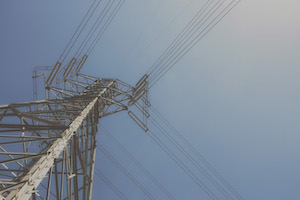Tsunami warnings downgraded as waves reach U.S. from Russia quake
Authorities across the U.S. and Asia lifted evacuation orders and downgraded warnings after a powerful earthquake in Russia’s Far East triggered a tsunami that rippled across the Pacific.
Four-foot waves were recorded in Hawaii, with smaller waves hitting coastal areas of California and Indonesia. Alerts in Hawaii and Japan were downgraded — allowing evacuees to return home — and warnings in Shanghai were canceled, but authorities cautioned that waves would continue to hit coastlines throughout the day.
“Everything has been OK so far, we haven’t seen a big wave,” Hawaii Governor Josh Green said earlier on Wednesday. Water was seen receding from the coastline, which can be a sign of an imminent tsunami, and “we expect two to three hours at least until we can call all clear,” he said.
The tsunami won’t have a “disastrous impact” on China’s coastal areas, Xinhua News Agency reported, citing the National Marine Environmental Forecasting Center.
The magnitude-8.8 quake struck at a depth of 21 kilometers off Russia’s Kamchatka Peninsula on Wednesday morning local time, triggering tsunami alerts from Japan and China to the U.S. and Canada, and as far away as Indonesia and New Zealand. An earthquake of that scale marks the strongest worldwide since 2011, according to recent data from the U.S. Geological Survey, and the most powerful in Russia since 1952.
The quake likely came from a shallow undersea “mega-fault,” said Rebecca Bell, a professor of tectonics at Imperial College London. “These are the largest faults on Earth and are capable of hosting the largest earthquakes,” she said.
Japan has seen minimal impact so far. The Japan Meteorological Agency downgraded all of its tsunami warnings to advisories, signaling lower risk, but prime Minister Shigeru Ishiba urged residents in affected areas remain on alert. “It’s possible that the second, third and fourth waves of tsunami could be much bigger” than the first, he said.
Japan is no stranger to tsunamis. In 2011, it was hit by a magnitude-9 quake off the northeastern coast, triggering waves of nearly 40 meters that destroyed coastal cities and claimed more than 20,000 lives. The waves overwhelmed Tokyo Electric Power Co.’s nuclear power plant in Fukushima, which resulted in a power failure and subsequent meltdown at the plant.
On Wednesday, NHK switched from normal programming to show information about the warning and initially urged people to flee from the shore. The broadcaster showed cars heading away from coastal areas in Matsushima in Miyagi prefecture, northern Japan. Sendai Airport, located in Miyagi, suspended flights and urged travelers to evacuate to the second floor of the terminal building.
Wednesday’s earthquake was big enough to displace “a huge amount of water, and usually that size does make it to the other side of the Pacific,” said Lucy Jones, a seismologist at the California Institute of Technology. Tsunamis travel 500 to 600 miles per hour, about the cruising speed of a Boeing 747, she said.
In Russia, near the epicenter of the earthquake, waves as high as 4 meters were observed and a town of 2,400 people was flooded in the Northern Kuril islands, according to media. No injuries were immediately reported.













